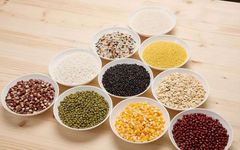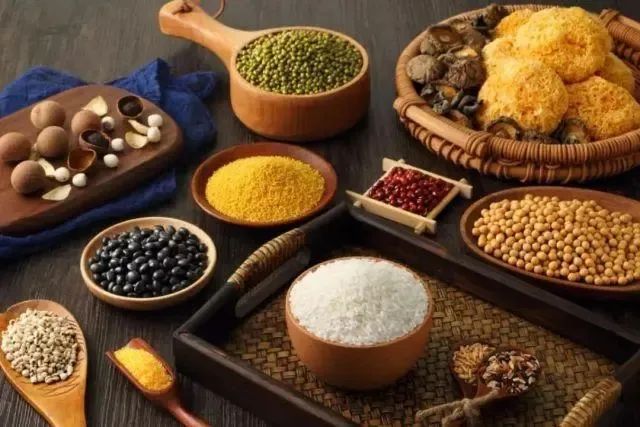 Since ancient times, “the five grains” have been an important part of people’s diets. The “Chinese Dietary Guidelines (2022)” also emphasize adhering to a diet primarily based on grains. Over 2000 years ago, the “Huangdi Neijing” proposed the dietary principle of “the five grains nourish, the five livestock benefit, the five fruits assist, and the five vegetables supplement.” Among these, the five grains are considered the mainstay of daily nutrition. So, what exactly are the “five grains”? Let’s take a look!
Since ancient times, “the five grains” have been an important part of people’s diets. The “Chinese Dietary Guidelines (2022)” also emphasize adhering to a diet primarily based on grains. Over 2000 years ago, the “Huangdi Neijing” proposed the dietary principle of “the five grains nourish, the five livestock benefit, the five fruits assist, and the five vegetables supplement.” Among these, the five grains are considered the mainstay of daily nutrition. So, what exactly are the “five grains”? Let’s take a look!
What are the “Five Grains”?
The earliest documented reference to the “five grains” can be traced back to the “Zhou Li: Tian Guan”: “Using the five flavors, five grains, and five medicines to nourish diseases.” This means that the five flavors, five grains, and five medicines can be used to regulate health. However, the specific five grains are not explained in the text. Historical documents vary in their accounts of the types of “five grains.” Currently, there are two widely recognized versions of the “five grains”: one is “ma (flaxseed), shū (beans), mài (wheat), jì (millet), shǔ (sorghum)”; the other is “dào (rice), shū (beans), mài (wheat), jì (millet), shǔ (sorghum).” Since people no longer consume flaxseed, the modern discussion of the “five grains” mainly revolves around rice, sorghum, millet, wheat, and beans.Rice: can be divided into indica rice, japonica rice, and glutinous rice;Sorghum: refers to modern northern sorghum, which is called yellow rice after peeling;Millet: mainly refers to millet, sorghum, or barley;Wheat: includes barley, wheat, oats, quinoa, and buckwheat;Beans: is a general term for legumes.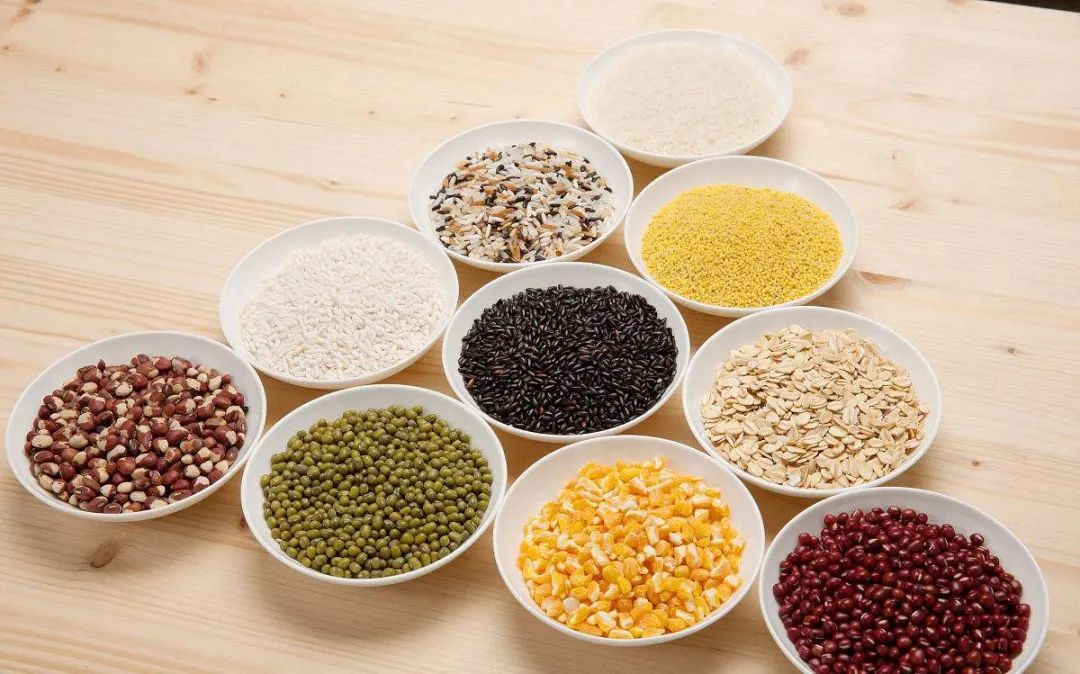
“Five Grains” Nourish the Five Organs
Traditional Chinese Medicine (TCM) believes that the five organs of the human body correspond to the five elements, and the five grains also correspond to these elements. Therefore, consuming the five grains appropriately can nourish each of the five organs.Sorghum: belongs to wood, primarily nourishes the liver, benefits the stomach, and has effects of astringing and stopping diarrhea;Wheat: belongs to fire, primarily nourishes the heart, calms the mind, and alleviates irritability;Millet: belongs to earth, primarily nourishes the spleen, can tonify the middle and benefit qi, and promote longevity;Rice: belongs to metal, primarily nourishes the lungs, and has the effect of nourishing yin and moistening the lungs;Beans: resemble the kidneys, thus belong to water, primarily tonify the kidneys, and have effects of strengthening the body and detoxifying the skin.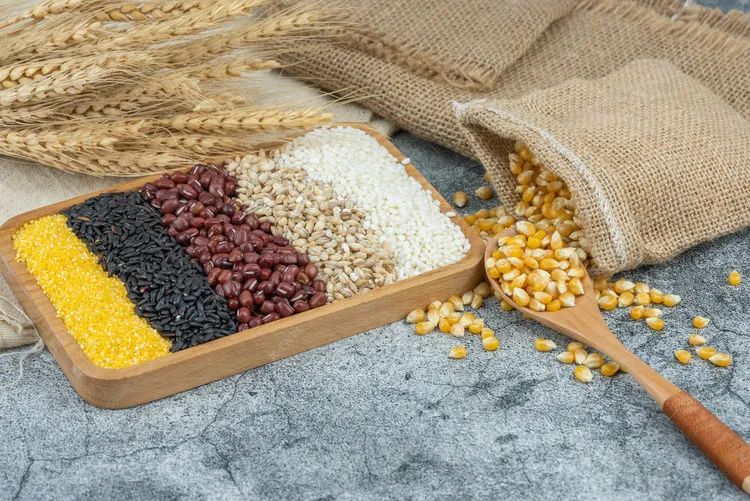
Common Health Benefits of the “Five Grains”
Millet is yellow in color, corresponds to earth in the five elements, and corresponds to the spleen in the five organs, having effects of strengthening the spleen and stomach, replenishing deficiencies, and calming the mind. In daily cooking, millet can be paired with longan meat and lily to treat insomnia; added with goji berries and red dates to nourish the liver and blood; or cooked with astragalus to address spontaneous sweating issues.Rice includes japonica rice and glutinous rice, has a sweet and neutral flavor, and is white in color, corresponding to metal in the five elements and the lungs in the five organs. Rice porridge as a staple food is not only easy to digest and absorb but also nourishes yin, moistens the lungs, and strengthens the spleen.Wheat is cool in nature, sweet in flavor, and slightly yellow in color, corresponding to wood in the five elements, spring in the seasons, and the liver in the five organs, known as the “grain of the liver,” having effects of soothing liver qi and alleviating irritability. The Ganmai Dazao Decoction created by Zhang Zhongjing, the “Sage of Medicine” from the Eastern Han Dynasty, is effective for treating liver qi stagnation and irritability.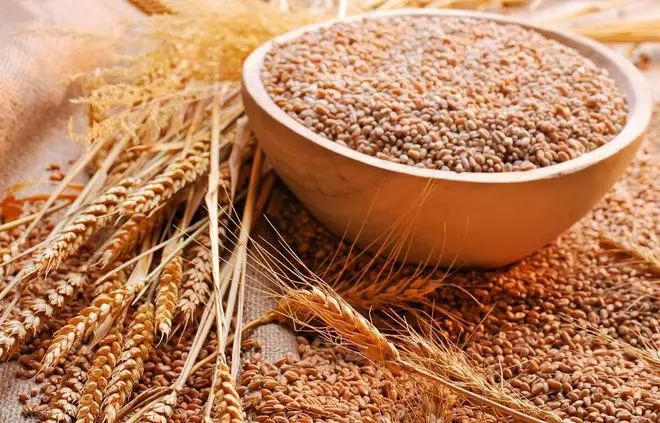 Beans come in many varieties, such as soybeans, black beans, mung beans, red beans, and lentils. Black beans are known as the “grain of the kidneys,” corresponding to the kidneys in the five organs, and are beneficial for nourishing the kidneys and blood; Yellow beans are yellow and correspond to the spleen, having effects of strengthening the spleen, promoting dampness, clearing heat, detoxifying, and tonifying qi; Red beans are red and correspond to the heart, promoting blood circulation and nourishing blood, as well as benefiting water metabolism and reducing swelling; Mung beans are green and correspond to the liver, having effects of clearing the liver, draining fire, and relieving summer heat; Lentils are yellowish-white and correspond to the spleen, strengthening the spleen and dispelling dampness, with good effects on regulating qi.Sorghum is red in color, has a sweet and astringent taste, and is warm in nature, corresponding to fire in the five elements and the heart in the five organs, helping to alleviate irritability and summer heat; it is rich in dietary fiber, and moderate consumption aids in bowel movements and heat clearance, but excessive amounts may be difficult to digest.Seeking Direction for Public Health, Building Bridges for Medical ExpertsWorld Health, No Illness in the World
Beans come in many varieties, such as soybeans, black beans, mung beans, red beans, and lentils. Black beans are known as the “grain of the kidneys,” corresponding to the kidneys in the five organs, and are beneficial for nourishing the kidneys and blood; Yellow beans are yellow and correspond to the spleen, having effects of strengthening the spleen, promoting dampness, clearing heat, detoxifying, and tonifying qi; Red beans are red and correspond to the heart, promoting blood circulation and nourishing blood, as well as benefiting water metabolism and reducing swelling; Mung beans are green and correspond to the liver, having effects of clearing the liver, draining fire, and relieving summer heat; Lentils are yellowish-white and correspond to the spleen, strengthening the spleen and dispelling dampness, with good effects on regulating qi.Sorghum is red in color, has a sweet and astringent taste, and is warm in nature, corresponding to fire in the five elements and the heart in the five organs, helping to alleviate irritability and summer heat; it is rich in dietary fiber, and moderate consumption aids in bowel movements and heat clearance, but excessive amounts may be difficult to digest.Seeking Direction for Public Health, Building Bridges for Medical ExpertsWorld Health, No Illness in the World
Shangyi Cihang National Health Project
We look forward to your participation
Long press to recognize the QR code
Follow the Shangyi Cihang public account

Long press to recognize the QR code
Follow the Jingxin Huxi public account

For more exciting content, please follow the official WeChat
Shangyi Cihang provides a platform for learning, communication, and expressing ideas
We also welcome everyone to contribute positive energy original articles representing your views
Some articles are reprints; if there are any copyright issues, please contact us for removal

